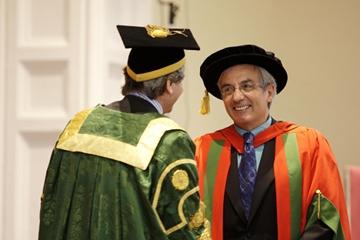Spintronics
Spintronics is a new technology that utilises a quantum property of the electron known as spin. Every electron spin is oriented in one of only two directions - up or down - and spintronics devices exploit this property for information storage and logic operations.
In most materials there is an equal number of electrons with spin up and spin down. Spintronics devices usually incorporate magnetic materials, as they possess more electrons with one spin direction than the other.

A simple spintronics device is shown in the figure above. It consists of two magnetic contacts (labelled Co) separated by a non-magnetic spacer (labelled Cu). An electric current entering the device from the left consists of spin up and spin down electrons. When this current flows through the first magnetic contact, the spins that are oriented in the same direction as the majority of spins in the contact find it easier to pass. The current entering the non-magentic spacer then consists of an unequal number of spin up and spin down electrons - it is said to be spin polarised. The spin-polarised current is then incident at the second magnetic contact. If the two magnetic layers are oriented in parallel, then the majority of the spins in the current also find it easier to pass through the second ferromagnetic contact. However, if the two magnetic contacts are oriented opposite to one another then the majority of electrons in the current find it harder to pass through the second contact. The resistance of the device is therefore determined by the relative orientation of the two magnetic layers - its low when they are parallel and high when they are antiparallel. This is the basis of the giant magnetoresistance - the basic technology underpinning hard-drive read heads. To learn more about GMR please click here.

Albert Fert receives an honorary doctorate from the University of Leeds.
The success of the spintronics research over the last decade can be measured by the rapid commercialisation of the first generation of spintronics devices in the data storage industry and was further underlined by the award of the Nobel Prize for Physics to Albert Fert (above) and Peter Grunberg for their work on giant magnetoresistance. Recent years have seen further exciting developments including the spin Hall effect, spin-torque transfer and long-distance coherent spin transport in new carbon-based materials. These discoveries have arisen as a result of the activity around first generation spintronic devices, but will define the future direction of the field. The new challenges in spintronics that we consider most exciting are the manipulation of single spins in electronics, the generation and control of pure spin currents, and the application of these to quantum information research.
The Condensed Matter Group has addressed the main questions in the field of spintronics via its ability to deposit ultrathin layers by a variety of means. To learn more about the group's spintronics research click here.
